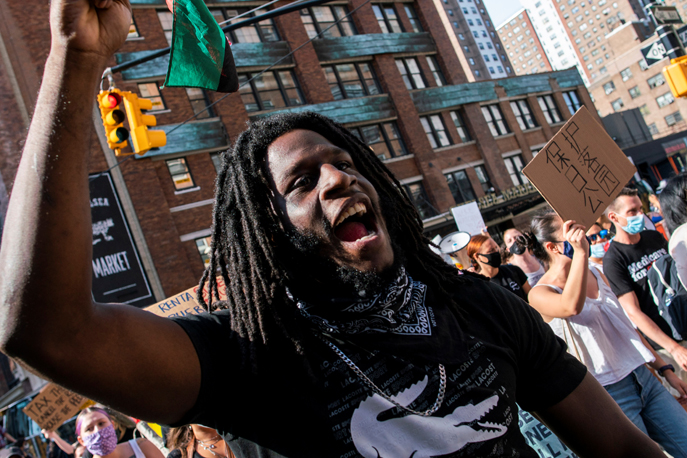Helen Chan and Julie DiMauro of Thomson Reuters Regulatory Intelligence look at how US and Canadian companies are responding to investor and consumer pressure to promote race relations in their own operations
Corporations with ties to the United States are being pressed by increasingly impatient investors and consumers to take tangible actions to address racial injustice in America. Over the past several months, businesses that have spoken out about race relations in the United States have been barraged with demands to do more than just pay lip service to solidarity.
The outcry for corporate contribution has included demands to increase workplace diversity and inclusion. At the behest of investors and regulators, boosting gender diversity has already been a focus for boards and C-suites at many North American companies in recent years. The activism and public discourse sparked by ongoing Black Lives Matter protests is putting pressure on corporate leaders to show visible progress in increasing black representation as well.
Although shifting demographics and growing investor pressure have called for more diverse leadership at American companies in recent years, racial diversity at all levels of corporations remains elusive, especially in lucrative industries such as investment banking and technology.
Banks have quite a long way to go: In 2019, only 2.2% of Morgan Stanley’s senior executives were black
A multi-year study published by the Alliance for Board Diversity and Deloitte on the diversity of boards of directors of Fortune 500 companies found that in 2018 only 11.1% of board seats were held by respondents who identified as African-American.
In a sign that corporations have somewhat accelerated their progress towards racial diversity, the study found that the percentage of Fortune 100 board seats held by African-Americans and Asians has increased at a “faster” rate of 1.2% between 2016 and 2018 than in previous two-year intervals, which showed gains of less than 1%.
In an online conference call between the chief executive officers of several large corporations, Kenneth Frazier, the CEO of Merck & Co, and one of just four black CEOs in the Fortune 500, said that businesses can lend a voice to such issues as police violence and minority communities’ access to capital.

In June, an email by a Goldman Sachs managing director detailing his experiences of racial injustice as a black man and criticising managers at the bank for not supporting junior bankers from diverse backgrounds went viral at the firm. The email and the attention it received coincides with other Wall Street executives and companies speaking out against racial inequality since the death of George Floyd and ensuing protests.
Bank of America recently pledged $1bn to help communities address economic and racial inequality; Goldman Sachs created a $10m fund for racial equity; and the CEOs of JPMorgan Chase, Citi, and Wells Fargo have also made statements denouncing racism and discrimination. Morgan Stanley recently announced the promotion of two black women to positions on its operating and management committees.
But banks have quite a long way to go: In 2019, only 2.2% of Morgan Stanley’s senior executives were black, with JPMorgan Chase reporting that just 4% of its top executives were black.
Black and indigenous communities have also been plagued by racial inequalities in Canada
In Canada, although less publicised, black and indigenous communities have also been plagued by racial inequalities, including socio-economic disparity and racial discrimination in the workplace. A study by the non-profit Catalyst in 2019 found that between 33% and 50% of the study’s 700 subjects who identified as black or Asian reported feeling “on guard” against potential workplace bias. Some respondents attributed the feeling to anticipation of racial or ethnic bias, suggesting that there is a need for racial bias training and other anti-racism initiatives at Canadian companies.
Diversity initiatives and regulatory reform in Canada have predominantly focused on gender diversity, with gradual improvement over the past few years. This demand for tangible results could soon extend to racial diversity.
At the start of the year, Canada became the first jurisdiction to require diversity disclosure beyond gender to include race and persons with disabilities. Federally incorporated public companies, which include most financial institutions, are now required to disclose their policies and practices on diversity at board levels and within senior management.

There are a few overarching objectives of the new disclosure requirements:
• to empower investors through information transparency;
• to press listed companies for continued advances in diversity;
• and to provide better data on the impact that diversity at senior levels can have on a company’s overall operational and financial performance.
Corporate accountability is at a high point right now, as stakeholders – including potential consumers and employees – arm themselves with information to better advocate for change. The same is true for businesses reacting right now to racial injustice, as they commit to donating to such causes and to creating greater advancement opportunities for people of colour inside their workplaces.
Indeed, CEOs who have spoken up may find an unrelenting public and persuasive investors determined to hold them to their pledges.
Social media users have been quick to demand concrete actions from consumer brands
Across the consumer goods sector, social media users have been quick to demand concrete actions and action plans from brands that have used popular hashtags to express solidarity against racism, with users threatening to boycott companies that don’t offer satisfactory responses.
It remains to be seen whether institutional investors and investment funds, which often wield immense influence over corporate boards and C-suites, will embody the same fervour to advance racial diversity initiatives.
However, actions taken by such institutional heavyweights as BlackRock, State Street Global Advisors, and the Ontario Teachers’ Pension Plan to increase gender diversity in senior corporate leadership offer a glimpse into what could become more commonplace: lobbying for diversity quotas and even voting against board committee chairs that fail to make progress in improving diversity.
Julie DiMauro is a Regulatory Intelligence Expert for Thomson Reuters, based in New York. She writes on regulatory compliance topics for the company’s Regulatory Intelligence platform and speaks about these topics at events and as a guest lecturer at Pace University.
Helen Chan is a Regulatory Intelligence Expert for Thomson Reuters Regulatory Intelligence. She is responsible for authoring expert analysis and delivering regulatory commentary on risk and compliance-related developments in Canada and across the Greater China region.
This article is part of the October issue of The Ethical Corporation, on the future of work. To download the digital pdf for free click on the cover below.
 Main picture credit: sirtravelalot/Shutterstock
Main picture credit: sirtravelalot/Shutterstock

